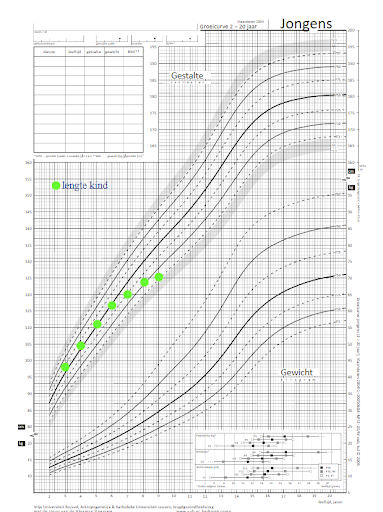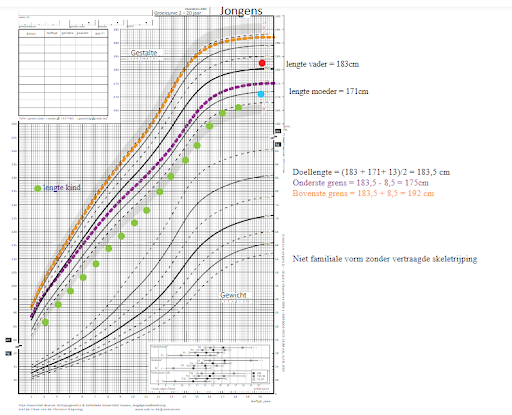Growth disorders
Short stature
Growth disorders
Related glands
/
Related Hormones
Growth Hormone
What is short stature?
Slow or poor growth and being short are defined in different ways.
- Short stature: height below the “bottom line 3rd percentile or -2 standard deviations” on the growth curve

- Slow growth: growth speed that is slowing down. The child’s growth curve crosses the percentile lines towards lower percentiles, for example from the 60th to the 10th percentile. Height can still be within the normal range.

- Growth below the mid–parental height range: A height that is too short compared to what you expect from the height of the parents.

- Disproportionate Growth: The torso and legs/arms do not grow at the same rate. This changes the ratio between the torso and the legs. Usually the legs are abnormally short, but occasionally the torso is just too short for normal leg length. In these growth disorders, the problem usually lies in the growth plates or the bone structure.
What causes short stature?
The causes of short stature/poor growth are generally classified into 3 groups:
- Short stature of unknown origin = idiopathic short stature
- Familial short stature with or without delayed skeletal maturation (short stature with growth in the mid-parental range)
- Non-familial with or without delayed skeletal maturation (short stature with growth below the mid-parental range)
- Primary growth disorders = Disorders in the growth of cartilage discs
- Skeletal dysplasia = hereditary disorders in the development or function of cartilage and bone
- Syndromes : Turner syndrome, Noonan syndrome, Down syndrome, etc.
- Secondary growth disorders = due to a problem that does not involve the growth plates
- Malnutrition
- As a result of a chronic disease of the heart, kidneys, liver, blood, etc.
- As a result of hormone disorders
- Growth hormone deficiency
- Thyroid hormone deficiency
- Lack of sex hormones (testosterone or oestrogens)
- Too many corticoids
- Persistent short stature after a birth with low weight or short stature for gestational age (SGA)
- Growth-inhibiting medication
- Psychogenic causes
How is short stature diagnosed?
To know if a child is tall or short, his/her height is compared with the height of other boys or girls. This can be done by plotting the height on a ‘growth curve’. The curve should be adapted to the child’s ethnic background, gender and age.
The position of a child’s height on the growth curve is not all that matters. It is also important to observe changes in his/her growth curve (down-crossing of percentiles).
What are the signs and symptoms of short stature?
See above
How is short stature treated?
Treatment, if applicable, depends on the cause of the short stature.